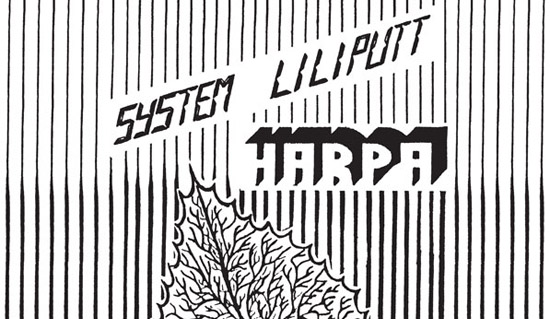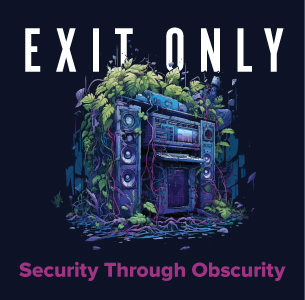When purely electronic music was much less rhythmically complex and much more about feeling and texture, you can’t beat it. Craig Hitchings investigates two of the newest births from Iceland’s TomTom Records.

I don’t know what it is about the music that emanates from thepeople of Iceland, but it always surprises me just how many good acts have come to international attention from this tiny volcanic island with such a relatively small population. Everything I’ve heard, whether from big names like Björk and Sigur Rós or lesser-known artists like Múm and Hilmar Örn Hilmarsson, seems to blend real-world instruments with a range of electronics in order to create beautifully crafted pop songs that also appeal to those with more leftfield tastes, which really is quite a feat when you think about it. Following in the footsteps of this marvelous lineage of musicians is Þorsteinn Ólafsson, otherwise known as Prince Valium – a name entirely suited to his very dreamy electronic sound. Here, then, we have Ólafsson’s second solo album, Andefni, which appears on brand new imprint TomTom, based in Iceland’s capital Reykjavík.
The album wastes no time introducing the sort of journey you’re about to undertake, with slowly evolving synth lines coming straight to the fore and washing over you on opening ditty “dab124.” Two-thirds of the way through, however, Ólafsson changes tack, bringing simple 6/8 beats and some gorgeous synth melodies to the table. In fact, even though the sounds are entirely electronic in nature (or at least highly manipulated acoustic elements mixed with synths and other electronic sources – I can’t quite tell which), there’s a very strong folk vibe that comes across throughout, mainly because of the highly emotive chords and oddly wistful melodies.
Third track, “meiramin,” evokes Boards Of Canada, bringing to my mind pleasing remembrances of their magical Music Has The Right To Children period, employing slow electronic beats, simple punchy basslines and nostalgically dreamy synths from a bygone era. Next track, “Sagittarius,” continues in true BOC style with a very delicate skit, pitched halfway between a tune and an atmospheric soundscape. Towards the end, there’s even a hint of Autechre’s Tri Repetae thrown in for good measure, at least in terms of its mechanical, repetitive and heavily effected percussion sounds, which continue to pop up throughout the rest of the album.
The next couple of tunes, “electropet” and “dab127,” could well have been left off the album in my honest opinion, as each one drifts rather aimlessly without any of the great hooks or sounds exhibited on the previous numbers. After these, however, there’s my favourite tune of the whole album, which is called, rather imaginatively, “dab60.” The ambient and atmospheric electronica continues unabated, of course, but the soft, breathy, wordless vocal melodies used here take Ólafsson’s work to the next level, providing another layer of emotion to the sometimes overly machine-driven backing. In fact, all the tunes that involve voices (“dab47,” with its Arabic overtones, is another example) are possibly the strongest offered here.
Eighth track, “Mysingur,” goes way, way back in my personal memory bank, evoking the stripped-down drum patterns, layered delay effects and warm synth tones of Autechre’s very earliest works, namely Incunabula and Amber. It’s also got a rather excellent bassline that seems to hang endlessly on the same note, making the brief filter sweeps that occur every so often really grab your attention, just as the deft synth work around it creates a quilt of soft sounds in which to curl up. Once again, the spoken word samples at the end of this number also make for a welcome distraction.
Overall, then, I’ve got to say that I love having this record on in the background whilst I’m doing other things. There’s absolutely nothing ground breaking about it, but for the memories it offers me of a time when purely electronic music was much less rhythmically complex and much more about feeling and texture, you can’t beat it.
Andefni is out now on TomTom.
:::….:.:::….:::::::..:::::…..::..::::…::::.:.::::..:::…:::….:::.::::.:.::.:::.:::.:::…:::..::…::

You should try your best to ignore the appalling title, Snapshot One: Life’s A Beach, as this is actually a very good release from Icelandic musician Anton Kaldal Ágústsson, otherwise known by his artist moniker Tonik. Here, then, we get a digital single from Tonik, the second release on relatively new electronic imprint TomTom, along with two remixes of the same track from fellow Nordic artists Bypass and Spejderrobot.
The thing that drew me to the release (and the label upon which it has been unleashed) was the original version from Tonik, which kicks off with low-passed bubbling acid synths, broken deep house beats and the occasional vocal stab, nicely hinting at what’s to come. It’s a deceptively minimal arrangement, though there is plenty going on in terms of chord changes in the filtered synth lines. This stripped-back approach also gives every instrument a very powerful presence yet also enables some of the more background orchestral elements, such as the gorgeous string washes and pizzicato sounds, space in the mix to breathe. Without a shadow of a doubt, though, it’s the lead vocal from Icelandic folk musician Johann Kristinsson (who reminds me in some respects of Fink or José González) that really makes this track stand out. Kristinsson’s delivery is excellent, providing an emotive and thoughtful focus for the listener, which, when coupled with Ágústsson’s judicious use of reverb, lies perfectly on top of the electronic soundbed.
The two remixes by Bypass and Spejderrobot do very little to mess with the formula set out by Tonik, with almost no stylistic changes occurring at all. Admittedly, though, both of them go down a more 4/4 route, which the original strongly hinted at even if it never quite got there, and both use a hell of a lot of sidechain compression to make the mix pump that little bit more than Tonik’s tune – this works out great on Bypass’ remix, with a mellow synth pad replacing the original’s bassline and subtly weaving in and out of the kicks, but in the case of Spejderrobot’s effort, where everything from the vocals to the string parts are pumping, I thought this made the mix rather muddy and confusing. In addition, both slap more reverb and effects on the vocal, which subtly adapts things in terms of space, but I personally prefer the original’s drier treatment. Neither remixer changes the vocal structure, even keeping the earlier vocal stabs in more or less the same place and delivering the lyrics in pretty much the same style as before, which is a missed opportunity to do some creative cut-ups in my opinion.
While there’s nothing particularly bad about the remixes when heard on their own, they sadly fail to stand up to the excellence of the original, which somewhat taints the whole package. I’ve got to admit that I quite like the Bypass remix, but the messier Spejderrobot remix, along with its rather ill-advised 8-bit lead sounds towards the end, could well have been left off this time. Nevertheless, the Tonik original is superb and I’m looking forward to hearing what Anton Kaldal Ágústsson does next, especially if he employs the singing talents of Johann Kristinsson once more.
Snapshot One: Life’s A Beach is out now on TomTom.

























